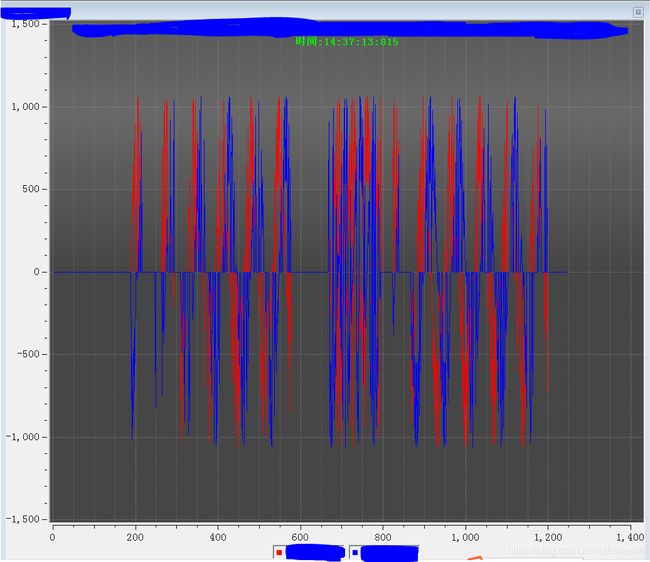Qt开发总结(21)——Qwt第三方绘图组件
上两篇分别记录了Qt的二维图表charts和三维图表Data Visualization,我们已经有感于它的强大和方便,但是我还是想写一写我使用了N年之久的qwt,一款强大的第三库方Qt库表库,它支持从Qt4.4到Qt5的所有版本,具有丰富的图表类,在那个Qt Charts和Data Visualization还是收费内容的时代,真的为开发人员提供了很大的帮助。
下载与安装
本篇笔记涉及的qwt是qwt官方6.1.3版本,Qt版本是Qt5.9.7。可以到官网下载:
http://www.sourceforge.net/projects/qwt/files
下载到的是源码,qwt并不提供编译好的库文件。于是我们需要做的第一件事就是结合本地的qt版本进行编译。我们下载到的zip压缩包解压缩到某一目录下,比如:C:/qwt-6.1.3/。打开qwtconfig.pri工程文件对工程进行配置,主要需要关系安装路径:
Install paths下有QWT_INSTALL_PREFIX = C:/Qwt-$$QWT_VERSION字段,可以改为自己的安装路径。其他的可以不改,如果你确实只想编译其中的部分控件功能,可以在下面的QWT_CONFIG字段进行删减。
简单的配置或是不做任何配置后,用Qt Creator打开qwt.pro工程,用本地的编译器configure之后直接构建就好了。如果你用命令行的话,不论是在windows还是在linux下都类似:
1.qmake qwt.pro
2.nmake (windows MSVC)或make(linux)
3.nmake install(windows MSVC)或sudo make install(linux)
生成了lib文件夹,内含Release下使用的qwt.lib qwt.dll和debug模式下使用的qwtd.lib qwtd.dll文件。建议直接拷贝到安装目录下C:/qwt-6.1.3/。在具体使用时可以在VS中设置该lib路径,在windows环境变量中添加path中dll的路径,或将这些库文件拷贝到工程目录下即可使用。当然,还需要设置include的路径,即C:\qwt-6.1.3\include。
常用类汇总
QwtAbstractScale: 包含刻度尺的所有类的抽象基类
QwtAbstractScaleDraw: 绘制刻度尺的抽象基类
QwtAbstractSlider: 滑块部件的抽象基类
QwtAlphaColorMap: 可以改变颜色的alpha值
QwtAnalogClock: 时钟的模拟类
QwtArrayData: 包含2个QwtArray
QwtArrowButton: 箭头按钮
QwtClipper: 剪贴板类
QwtColorMap: 提供数值到颜色的映射功能
QwtCompass: 指南针部件
QwtCompassMagnetNeedle: 指南针部件的磁针
QwtCompassRose: 罗盘部件的抽象基类
QwtCompassWindArrow: 风向标的指示器
QwtPlot: 地基容器,里面可放其他对象
QwtPlotItem: 负责控制绘图数据的产生和传递,并绘制一个坐标轴
QwtPlotCurve: 曲线类,用于绘制各种曲线
QwtPlotMarker: 标尺类,用于绘制刻度线
QwtData: 定义任何曲线类型的数据接口
QwtPlotGrid: 网格
QwtPlotHistogram: 直方图
QwtPlotBarChart: 条形图表
QwtPlotMultiBarChart: 成组的条形图表——堆叠或并排对齐
QwtPlotShapeItem: 显示矩形、圆、多边形和其他所有的形状的plot item,可以用QPainterPah表示
QwtPlotTextLabel: 和QwtPlotMarker相反,文本不是基于plot坐标排列,而是根据画布(canvas)的几何形状(geometry)
QwtScaleTransformation已经被QwtTransform和QwtNullTransform、QwtLogTransform、QwtPowerTransform替换
QwtDate: 在QDateTime和Double之间转换的方法的集合
QwtPlotPanner: 平移器(用鼠标左键平移)
QwtPlotMagnifier: 放大器(用鼠标滚轮缩放)
QwtPlotCanvas: 画布
QwtScaleMap: 比例图( 可以提供一个逻辑区域到实际区域的坐标转换 )
QwtScaleWidget: 比例窗口
QwtScaleDiv: 比例布局
QwtLegent: 标注
QwtPlotLayout: 布局管理器
QwtScaleDraw: 自画坐标轴
QwtAbstractScale: 包含刻度尺的所有类的抽象基类
QwtAbstractScaleDraw: 绘制刻度尺的抽象基类
QwtAbstractSlider: 滑块部件的抽象基类
QwtAlphaColorMap: 可以改变颜色的alpha值
QwtAnalogClock: 时钟的模拟类
QwtArrayData: 包含2个QwtArray
QwtArrowButton: 箭头按钮
QwtClipper: 剪贴板类
QwtColorMap: 提供数值到颜色的映射功能
QwtCompass: 指南针部件
QwtCompassMagnetNeedle: 指南针部件的磁针
QwtCompassRose: 罗盘部件的抽象基类
QwtCompassWindArrow: 风向标的指示器
QwtPlot: 地基容器,里面可放其他对象
QwtPlotItem: 负责控制绘图数据的产生和传递,并绘制一个坐标轴
QwtPlotCurve: 曲线类,用于绘制各种曲线
QwtPlotMarker: 标尺类,用于绘制刻度线
QwtData: 定义任何曲线类型的数据接口
QwtPlotGrid: 网格
QwtPlotHistogram: 直方图
QwtPlotBarChart: 条形图表
QwtPlotMultiBarChart: 成组的条形图表——堆叠或并排对齐
QwtPlotShapeItem: 显示矩形、圆、多边形和其他所有的形状的plot item,可以用QPainterPah表示
QwtPlotTextLabel: 和QwtPlotMarker相反,文本不是基于plot坐标排列,而是根据画布(canvas)的几何形状(geometry)
QwtScaleTransformation已经被QwtTransform和QwtNullTransform、QwtLogTransform、QwtPowerTransform替换
QwtDate: 在QDateTime和Double之间转换的方法的集合
QwtPlotPanner: 平移器(用鼠标左键平移)
QwtPlotMagnifier: 放大器(用鼠标滚轮缩放)
QwtPlotCanvas: 画布
QwtScaleMap: 比例图( 可以提供一个逻辑区域到实际区域的坐标转换 )
QwtScaleWidget: 比例窗口
QwtScaleDiv: 比例布局
QwtLegent: 标注
QwtPlotLayout: 布局管理器
QwtScaleDraw: 自画坐标轴
QwtPlot绘制二维曲线
自己编写了一个通过QwtPlot绘制二维曲线的定制类,该类中应用了QwtPlotGrid设置栅格显示,通过QwtLegend设置图例,通过QwtPlotCurve添加曲线,通过QwtText设置文字标注,通过QwtPlotZoomer设置区域缩放,通过QwtPlotRenderer把绘图区域生成pdf文件,通过QwtPlotItem显示某点的坐标值等。效果图:
上源码:
//CPlot.h
#ifndef CPLOT_H
#define CPLOT_H
#include
#include
#include
#include
#include
#include
#include
#include
#include
#include
#include
#include
class CPlot : public QwtPlot
{
Q_OBJECT
public:
CPlot(QWidget *parent = 0);
virtual ~CPlot();
private:
int CurNum;
QVector m_curve;
QwtPlotZoomer *m_zoomer[2];//绘图插件的鼠标放大缩小功能
QwtPlotTextLabel *InfoLabel;
private:
void InsertLegnd();
void SetZoom();
public:
virtual void replot();
void InsertCurve(QString Title, QColor color);
QwtPlotCurve *Curve(int nId);
void PlotCurve(const int curId, const double *xData, const double *yData, const int Len);
void PlotCurve(const int curId, QVector &xData, const QVector &yData);
void InsertText(QString str, int pos);
void ClearCuerve();
void RemoveCurve(int id);
void ExportCurPdf();
private slots:
void showItem(const QVariant &itemInfo, bool on);
};
#endif // CPLOT_H
//CPlot.cpp
#include "cplot.h"
CPlot::CPlot(QWidget *parent)
: QwtPlot(parent),
CurNum(0)
{
//变量初始化
m_zoomer[0] = NULL;
m_zoomer[1] = NULL;
InfoLabel = new QwtPlotTextLabel();
//设置背景布
QLinearGradient gradient(0, 0, 0, 400); //背景布
gradient.setColorAt(0, QColor(90, 90, 90));
gradient.setColorAt(0.38, QColor(105, 105, 105));
gradient.setColorAt(1, QColor(70, 70, 70));
this->setCanvasBackground(QBrush(gradient));
this->setAutoReplot( false );
//设置网格
QwtPlotGrid *grid = new QwtPlotGrid;
grid->enableXMin( true );
grid->setMajorPen( Qt::gray, 0, Qt::DotLine );
grid->setMinorPen( Qt::darkGray, 0, Qt::DotLine );
grid->attach( this );
//自动适应的坐标轴设置
this->setAxisAutoScale(QwtPlot::yLeft, true);
this->setAxisAutoScale(QwtPlot::xBottom, true);
QwtScaleDraw *scaleDraw = axisScaleDraw(QwtPlot::yLeft);
if (scaleDraw)
{
scaleDraw->enableComponent(QwtAbstractScaleDraw::Backbone,false);
}
//this->setAxisScaleDraw(QwtPlot::yLeft, )
//设置线宽
this->setLineWidth( 0 );
//图例
InsertLegnd();
//缩放
SetZoom();
}
void CPlot::InsertLegnd()
{
QwtLegend *legend = new QwtLegend;
legend->setDefaultItemMode(QwtLegendData::Checkable);
this->insertLegend( legend,QwtPlot::BottomLegend);
connect(legend, SIGNAL(checked(const QVariant &, bool, int)),this, SLOT(showItem(const QVariant &, bool)));
}
void CPlot::replot()
{
QwtPlot::replot();
}
void CPlot::InsertCurve(QString Title, QColor color)
{
QwtPlotCurve *Cur = new QwtPlotCurve();
Cur->setTitle(Title);
Cur->setPen(color);
m_curve.append(Cur);
Cur->attach( this );
//图例
QwtLegend *lgd = qobject_cast( legend() );
QList legendWidgets =
lgd->legendWidgets( itemToInfo( Cur ) );
if ( legendWidgets.size() == 1 )
{
QwtLegendLabel *legendLabel =
qobject_cast( legendWidgets[0] );
if ( legendLabel )
legendLabel->setChecked( true );
}
CurNum++;
}
QwtPlotCurve * CPlot::Curve(int nId)
{
if (m_curve[nId] != NULL)
{
return m_curve[nId];
}
else
{
return NULL;
}
}
void CPlot::PlotCurve(const int curId, const double *xData, const double *yData, const int Len)
{
if(curId >= m_curve.size())
{
QMessageBox::critical(this, tr("警告"), tr("未添加第%1条曲线").arg(curId));
return;
}
if (m_curve[curId] != NULL)
{
m_curve[curId]->setSamples(xData,yData,Len);
m_curve[curId]->attach(this);
}
//自动适应的坐标轴设置
this->setAxisAutoScale(QwtPlot::yLeft, true);
this->setAxisAutoScale(QwtPlot::xBottom, true);
this->replot();
SetZoom();
}
void CPlot::PlotCurve(const int curId, QVector &xData, const QVector &yData)
{
if(curId >= m_curve.size())
{
QMessageBox::critical(this, tr("警告"), tr("未添加第%1条曲线").arg(curId));
return;
}
if (m_curve[curId] != NULL)
{
m_curve[curId]->setSamples(xData,yData);
m_curve[curId]->attach(this);
}
//自动适应的坐标轴设置
this->setAxisAutoScale(QwtPlot::yLeft, true);
this->setAxisAutoScale(QwtPlot::xBottom, true);
this->replot();
SetZoom();
}
void CPlot::InsertText(QString str, int pos)
{
QwtText TextLabel( str );
TextLabel.setRenderFlags( pos );
QFont font;
font.setBold( true );
font.setPointSize(10);
TextLabel.setFont( font );
TextLabel.setColor(Qt::green);
InfoLabel->setText(TextLabel);
InfoLabel->attach(this);
}
void CPlot::SetZoom()
{
//此处创建左键缩放功能可以使得右键恢复至适应之后的坐标轴
//清理缩放功能信息
if (m_zoomer[0] != NULL)
{
delete m_zoomer[0];
m_zoomer[0] =NULL;
}
if (m_zoomer[1] != NULL)
{
delete m_zoomer[1];
m_zoomer[1] =NULL;
}
m_zoomer[0] = new QwtPlotZoomer( QwtPlot::xBottom, QwtPlot::yLeft,
this->canvas() );
m_zoomer[1] = new QwtPlotZoomer( QwtPlot::xTop, QwtPlot::yRight,
this->canvas() );
for (int i=0; i<2; ++i)
{
m_zoomer[i]->setTrackerMode( QwtPicker::AlwaysOff );
m_zoomer[i]->setRubberBand( QwtPicker::NoRubberBand );
// 右键: 恢复1次
// Ctrl+右键: 直接回到原始
m_zoomer[i]->setMousePattern( QwtEventPattern::MouseSelect2,
Qt::RightButton, Qt::ControlModifier );
m_zoomer[i]->setMousePattern( QwtEventPattern::MouseSelect3,
Qt::RightButton );
}
m_zoomer[0]->setRubberBand( QwtPicker::RectRubberBand );
m_zoomer[0]->setRubberBandPen( QColor( Qt::green ) );
m_zoomer[0]->setTrackerMode( QwtPicker::ActiveOnly );
m_zoomer[0]->setTrackerPen( QColor( Qt::white ) );
m_zoomer[0]->setEnabled( true );
m_zoomer[0]->zoom( 0 );
m_zoomer[1]->setEnabled( true );
m_zoomer[1]->zoom( 0 );
}
void CPlot::RemoveCurve(int id)
{
if (id >= m_curve.size())
{
return;
}
//for (int i=0; isetSamples(NULL);
//}
delete m_curve[id];
m_curve[id] = NULL;
//m_curve.remove(id);
this->replot();
}
void CPlot::ClearCuerve()
{
for (int i=0; isetSamples(NULL);
}
this->replot();
}
void CPlot::ExportCurPdf()
{
QwtPlotRenderer renderer;
renderer.exportTo( this, "*.pdf" );
}
CPlot::~CPlot()
{
for (int i=0; isetVisible(on);
}
this->replot();
}
